Valdinievole
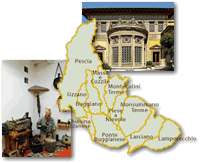
The territory’s economy has always been conditioned by the abundance of water and the presence of geothermal phenomena. The motive power supplied by the Pescia and Nievole streams, as of the Middle Ages, favoured the birth of the paper industry and the processing of minerals, while as of the 15th century, the sulphureous water of the Montecatini area began to be used for spa purposes, offering an until then unexpected source of income.
Exit the A11 motorway at Chiesina Uzzanese, then take SP13 for about 10 km until reaching Pescia. Once past the town, take SP3 for about 2 km to the locality of Pietrabuona where you will find the Museo della Carta, which documents manufacturing activity with an exhibition of tools and historical machinery.
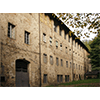
Several paper-mills perhaps already existed upstream of the city of Pescia in the Middle Ages, though certain news of their presence is recorded only in following centuries. It was mainly in the second half of the 18th century, with the abolition of the monopoly on paper by Grand Duke Francis Stephen of Lorraine, that the factories of Pescia exceeded in number and importance those of Colle di Val d’Elsa, which had long been the capital of paper production. So it was that in the 19th century, Pescia became the most important paper producing centre in the Grand Duchy.
For motive power, the paper-mills used the water of the Pescia stream by means of a dense network of canals and millraces. The raw materials were rags, mainly made of hemp and linen, and carnicci, that is to say the fragments of flesh that remained attached to animal hides. Drafted around 1820, the "Regolamento dell’arte della carta all’uso di Toscana con i suoi rispettivi scandagli tratti dagli usi antichi e moderni soliti praticarsi negli edifizi di Pescia in Toscana e nello Stato di Genova", indicates the machinery, working methods, and division of labour within a paper-mill. In a factory with a single vat, for example, the ground floor was utilised for the pulp-making tanks, the vat and boiler. On the second floor were lodged the "ripper" to tear the rags, the workshops and accommodations for the "pulp-making tank deputy"; on the third floor were the lodgings for the workers and the director; on the forth floor was the spreader, a single large room with very large windows, where the sheets of paper were placed to dry.
In 1992, the Documentation Centre on Paper Manufacture was founded in order to document this historical manufacturing activity. Later, it set up a fascinating museum divided into two centres: the Documentation Centre on Paper Manufacture, which exhibits educational models of machinery, and the former "Le Carte" paper-mill, which conserves old devices (several of which date to the 18th century) for the handcrafted production of special papers.
The collection consists of equipment and machinery (vats, rag-grinding pulp-making tanks, machinery for the preparation of mixtures, hand-presses, a screw-press and a water turbine) utilised at the "Le Carte" paper-mill. On the ground floor, the facilities occupy their original location. The collection also includes hand-operated machines for making paper, such as ruling machines and shears, in addition to filigrees and models of excellent quality papers, including the one chosen by Napoleon Bonaparte for his wedding invitations.
(Graziano Magrini)
Take SP3 northbound until you reach Vellano, location of the Museo Storico Etnografico del Minatore e del Cavatore with its collections of machinery, tools and minerals.
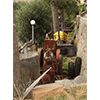
The Museum was instituted in 1999 thanks to Publio Biagini, son of a stonemason, who began collecting in 1967 and became owner of one of the many quarries of pietra serena in the area. It purposes to document the traditional extraction activities and the working of the pietra serena of Vellano, capital of the "Pesciatine Switzerland", with an exhibition itinerary abounding in tools, machinery and artefacts, completed by life-size reconstructions of mine interiors, with visual and sound effects.
The collection of mining equipment is formed by tools used by miners especially in the 19th and 20th centuries, though it also contains older exhibits. It includes, in particular, hand and motor-operated excavation utensils, explosives and powder-depot equipment, objects for lighting, masks, helmets and water-flasks, chemical reagents and instruments to identify the material extracts. There is also a geo-palaeontological collection and a mineral collection containing numerous varieties of minerals found in Tuscany, many of them rare. The collections are exhibited in three rooms, while large machinery is on show in the garden.
(Donato Monaco)
From Vellano, take SS633 for less than 20 km to Montecatini, a locality whose name for centuries has been tied to the exploitation of its famous spa waters. The oldest facility is the one known as Tettuccio that stands on the site of Bagno Nuovo, frequented since the 15th century.
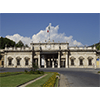
Already in the early 15th century Ugolino da Montecatini, in his Tractatus de Balneis, prescribed rules for thermal treatments: the water of the "Bagno Nuovo", later known as the Tettuccio, "admirably releases the stomach and provokes vomiting; opens obstructions, especially those of the kidneys and occasionally dissolves kidney stones. Kills and expels worms; stimulates the appetite. It should be drunk in the morning for three consecutive days. The cure must be continued until the water expulsed is as limpid as when it was ingested. A great number of men and women, for the most part peasants or artisans from Pistoia, Prato and even Florence, visit these thermal baths without following any rules. I have seen some of them drink as much as a barrel of this water and then expel it crystal clear".
In 1430 the building of a fishing-weir in the nearby Padule di Fucecchio, at the order of the Republic of Florence, caused problems for the drainage of water from the Baths. This was the beginning of a long period of decline, despite the fact that the waters of Montecatini were recommended by illustrious scientists such as Gabriele Falloppia, Andrea Bacci, Andrea Cesalpino, Pompeo della Barba, Francesco Redi and others. Redi recommended the waters as a remedy for dysentery and colic.
Finally, in the second half of the 18th century, Grand Duke Peter Leopold of Lorraine had the fishing-weir demolished and the Baths rebuilt, inaugurating a felicitous season for thermal cures. In 1788 Alessandro Bicchierai published a treatise (Dei Bagni di Montecatini) [Concerning the Baths of Montecatini] in which he went beyond the purely descriptive tradition to present new methods of analysis that established the nature and properties of the waters.
In the 19th century Montecatini and other important thermal stations in Tuscany, such as Bagni di Pisa and Bagni di Lucca, attained a peak of splendour, becoming places frequented by famous Italian and European celebrities. In August 1918 Maria Sklodowska-Curie, the illustrious Polish scientist, in collaboration with the chemists Camillo Porlezza and Raffaello Nasini, measured the radioactivity of the thermal waters at the Tettuccio establishment.
Visited by artists throughout the 20th century, Montecatini is a masterpiece of garden-city of the arts. With its elegant thermal establishments, it is one of the best-known spas in Europe.
(Graziano Magrini)
Also in Montecatini and particularly interesting for lovers of engineering is the old funicular railway which, since the late 19th century, connects Montecatini Basso to the medieval village situated on top of a hill.
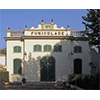
Works for the funicular that connects Montecatini Terme and Montecatini Alto began on March 1, 1897 and were completed the following year, on a project by engineer Alessandro Ferretti from Genoa. Its inauguration on June 4, 1898 was also attended by Giuseppe Verdi. The two little red trains (originals) of three compartments with wooden benches and two external balconies, travel a distance of 1055 metres, reaching a maximum slope of 38.5% (the average slope is 20.5%). Until 1921, it was driven by a large steam boiler, then replaced by an electric engine. The funicular installations were in part mined in 1944 by a squad of retreating saboteurs, and then repristinated in 1949. Failure to renew its structures led to closing the funicular in 1977, but in 1982, thanks to the intervention of regional government, the cars were restored and the latest equipment was installed. Today, it is therefore possible to take the train and admire the extraordinary panorama that unfolds along the way.
(Graziano Magrini)
Monsummano, a pleasant town close to Montecatini and reachable on Via Empolese/SR436/SS436, became famous for its caves used for therapeutic purposes as of the mid 19th century. The most fascinating and best preserved example is the Grotta Giusti.
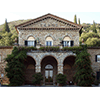
The thermal centre at Monsummano developed thanks to the chance discovery, in 1849, on the southern side of the mountain rising above the town, of a natural warm-steam cavern in a stone quarry owned by Domenico Giusti, father of the famous satirical poet Giuseppe Giusti. In July of 1853, after the first work carried out to adapt the cavern for use, the Giusti family began to exploit this new and unexpected resource. "The air of this cavern", wrote Antonio Targioni Tozzetti, who was the first to analyze it, "filled with steam and naturally heated to an appropriate temperature, offers an excellent means for taking steam baths, with great benefit to the health, as experience has clearly demonstrated." On the facade of the building leading to the cavern is a complex, elegant sundial made by Carlo Cataldi in 1898.
Today Monsummano Terme is one of the best-known anthropic therapy centres in Europe. The Museum of the City and the Territory has a section on thermal activity which documents the history of thermal baths in Monsumanno and the phenomenon of thermal tourism.
(Graziano Magrini)
The multifarious Museo della Cittą e del Territorio located in town, instead offers a 360° view of the history and culture of the Valdinievole and the Fucecchio Swamp.
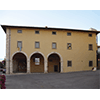
Founded in 1998, the Museum is located in the ancient Pilgrim's Tavern. It collects materials of different kinds, coming from different disciplines, and is therefore divided into various sections: Geology and Palaentology, Environment and History, Archaeology, the Padule di Fucecchio, the Grand-ducal Farms, Monsummano from Sanctuary to City, Religious Art and Popular Religion, the Treasure of Maria Santissima della Fontenuova, Valdinievole "Felix", Thermal Baths, Production and Industry. The basic themes of the exhibition are the interaction between mankind and the environment, and the forms of territorial organisation that have prevailed over the course of time until today.
In particular, the geo-palaeontological collection contains fossils and rock samples from the hills of Monsummano, with specific attention to the marbles utilised in some famous architectural works. The cartographic collection includes a series of original historical charts and an atlas, dating from the 18th and 19th centuries, which anticipate by several decades the geometric maps of the Land Office plots made under the Tuscan Grand Duchy, as well as numerous reproductions of maps and charts from the 16th and 17th centuries. The latter document the environmental changes brought about by projects for controlling water courses and draining the swamps of Fucecchio. Numerous tools and photographs illustrate the working methods and production cycles linked to fishing, to harvesting palaustrine plants and to manufacturing shoes. Noteworthy are two boats for navigating through the swamps: the "barchino" (little boat) and the "barcone" or "navicello", a larger craft.
The Museum represents the first core around which will be organised the Valdinievole Museum system, constituting the educational centre for itineraries devoted to the cultural assets of the area.
(Graziano Magrini)
Finally, the ideal completion to the itinerary is the Fucecchio Swamp Nature Reserve located about 6 km from Monsummano, with a Research Centre that documents and promotes the valorisation of this special territory.
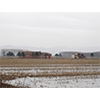
Belonging since the early 14th century to the Republic of Lucca, the lake-marshes of Fucecchio, surrounded by the Pisan Mountains, Monte Albano and the hills of Cerreto Guidi, became the property of the Republic of Florence in 1328. After partial land reclamation projects had been carried out, in 1549 Cosimo I de' Medici commissioned Luca Martini to turn the lake into a vast basin reserved to fishing. Martini proposed to reduce the flow of the Usciana, the lake's emissary, by building the dam at Ponte a Cappiano.
Leonardo depicted and mentioned the Padule di Fucecchio (the Fucecchio marshes) several times, starting with the drawing dated August 5, 1473 (GDS, Uffizi), in his hydrographic studies (RLW 12277) and in relation to his grandiose project for deviating the waters of the Arno from Florence through Prato, Pistoia, Serravalle and the Val di Nievole (RLW 12685 e 12279; Madrid Ms. II, f. 22v-23r; Codex Atlanticus, ff. 127r and 1107r.
In the early 17th century Ceseri Frullani from Cerreto Guidi wrote two works (Gl'avvenimenti del lago di Fucecchio e modo del suo governo [Concerning the Fucecchio lake and the mode of governing it] and Discorsi di cose create et non venute alla luce intorno al lago di Fucecchio e sua vicinanza) [Discourse on things created and not come to light in the Fucecchio lake and its vicinity] in which he maintained the need to raise the level of the water in the lake, with benefit to fishing and to the wholesomeness of the air. The problem of land reclamation was confronted again by Galileo's disciple Vincenzo Viviani, who in 1670 analysed some emissaries of the lake, the Pescia in particular, proposing deviations for reclaiming land to be annexed to the Grand Ducal farms. In 1678 and in 1682 he studied the course of the Usciana and the condition of the dam at Ponte a Cappiano.
Starting in 1780 Grand Duke Peter Leopold of Lorraine promoted a project for land reclamation of the plain that called for demolishing the dam at Ponte a Cappiano, re-excavating ditches and navigable canals, and a number of provisions for incrementing agricultural and commercial activity in the area. These projects were accompanied by the donation, in 1796, of the "chiaro" of the Padule to the bordering Communities. In the early 19th century, botanical and fish studies were carried out, but the situation was still problematical, especially due to the periodic flooding of the Arno in the area downstream of Ponte a Cappiano. Since 1795 Vittorio Fossombroni had studied measures to solve this problem, but they were acknowledged only in 1826 by Grand Duke Leopold II, who commissioned the engineer Luigi Kindt to build sluice-gates at Ponte a Cappiano. Dating from 1860 is a project for the complete draining of the Padule, never implemented, while the last land reclamation projects date from 1931.
Today the area is controlled by the Land Reclamation Consortium of Padule di Fucecchio, whose maintenance work has improved the hygienic-environmental conditions of the wet zone and turned the basin into a nature reserve. The Centre for Research, Documentation and Promotion of the Padule di Fucecchio, made up of representatives of Public Authorities and Associations is dedicated to the conservation and promotion of the Padule and Sibolla Lake area. The Centre produces scientific and educational material, and organizes educational and tourist visits. It also manages the Workshop for Environmental Education in the Padule di Fucecchio, which promotes educational itineraries of the naturalist and historical-environmental type.
(Graziano Magrini)
****************************
Texts by Elena Fani
English translation by Victor Beard
Last update 28/feb/2008



 = libraries and archives
= libraries and archives  = scientific research centers
= scientific research centers  = memorial places of scientists
= memorial places of scientists = public health places
= public health places = places of science and worship
= places of science and worship = places of technology
= places of technology  = museums and collections
= museums and collections  = villas and gardens of science
= villas and gardens of science


